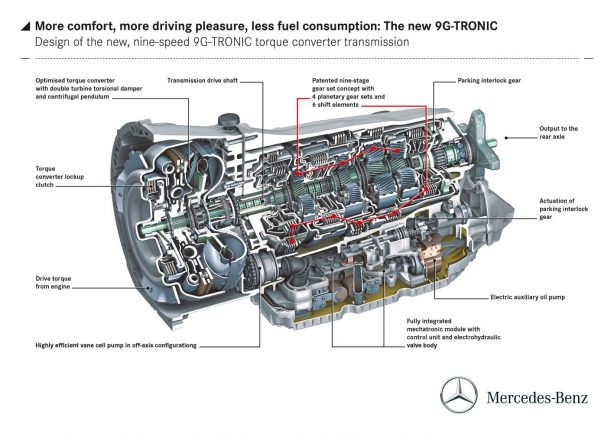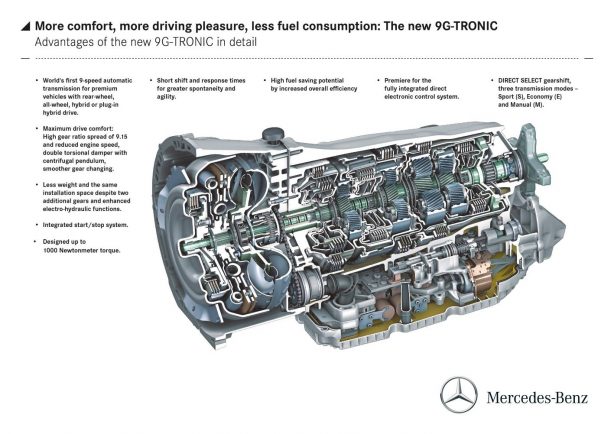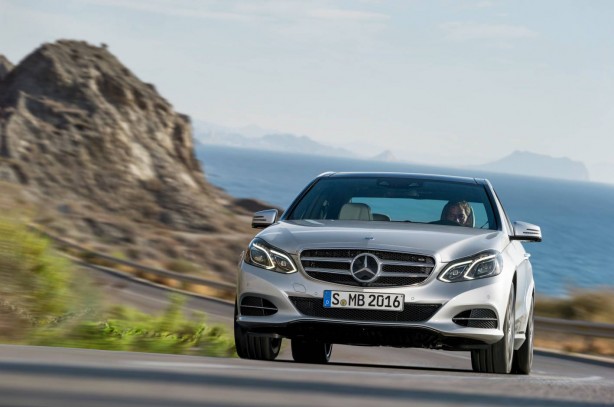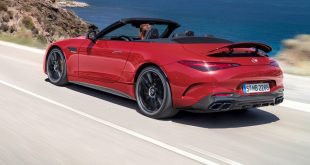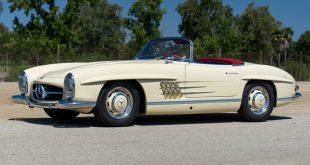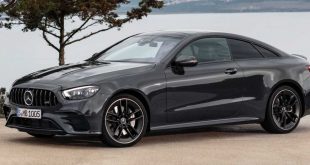Mercedes-Benz has introduced its new nine-speed automatic transmission on the company’s E-Class. The 9G-TRONIC will make its debut on the E 350 BlueTEC which is set to become the most fuel-efficient six-cylinder diesel models in its class.
Powered by a 185kW V6 diesel engine, the E350 BlueTEC consumes just 5.3L/100km (sedan) and 5.5L/100km (estate) of fuel when paired with the new transmission. CO2 emission is rated at 138g/km (estate: 144g/km). The reduction in fuel consumption is a direct result of high level of efficiency of the transmission.
Mercedes-Benz said the higher number of gears and the broader gear ratio spread of 9.15 for gears one to nine help to increase drive comfort. With higher ratios, the overall engine speed is reduced, thus improving NVH levels. Externally, it also cuts down external noise by up to 4 dB(A), thus reducing strain on the environment.
The new 9G-TRONIC has shorter shift and reaction times. In manual mode and the S program in particular, the transmission responds significantly more spontaneously for a sportier driving experience.
The particular ease of shifting of the new 9G-TRONIC – a focal point during development and a hallmark feature of a Mercedes-Benz automatic transmission – comes courtesy of a comprehensive package of measures. These include the novel direct control system which enables short, barely perceptible gear changes. The combination of double torsional damper and centrifugal pendulum technology in the torque converter ensures outstanding drive comfort. Together with the extended gear ratio spread, higher speeds can now be driven at lower engine speeds for even greater comfort. In reality this translates, for example, into being able to drive at 120 km/h in 9th gear with an engine speed of around only 1,350 rpm.
Despite two additional gears and a maximum transferable torque of up to 1,000Nm, the new automatic transmission requires as little installation space as its predecessor and is also lighter. The two-piece housing design has been retained: the torque converter housing is made of lightweight aluminium, while the transmission housing, with weight-optimised plastic oil pan, is made of an even lighter magnesium alloy.
Mercedes-Benz has also successfully implemented the nine gears with a minimal number of planetary gear sets and shift elements. Intensive, computer-based system analysis and mock-up made it possible to realise this goal with just four simple planetary gear sets and six shift elements. Three speed sensors monitor operation and provide the transmission control system with corresponding data for effective shifting. Here it is possible for several gears to be jumped when accelerating or decelerating, should the driving conditions call for it.
To ensure the reliable, and at the same time, highly efficient supply of the durable and shear-resistant 2nd-generation synthetic fuel economy engine oil, the new automatic transmission is fitted with two pumps. The considerably smaller mechanical main pump, featuring an off-axis design, is located next to the main shaft and is chain-driven and fed by a separate electric auxiliary pump. This design enables the flow of lubrication and coolant to be controlled actively on demand and also means that the 9G-TRONIC can benefit from a start/stop system. Thanks to the world’s first direct control system in a planetary automatic transmission with nine gears, it has also been possible to significantly increase hydraulic efficiency within the transmission.
 ForceGT.com Car News, Car Reviews, Video Reviews, Tuning and much more.
ForceGT.com Car News, Car Reviews, Video Reviews, Tuning and much more. 